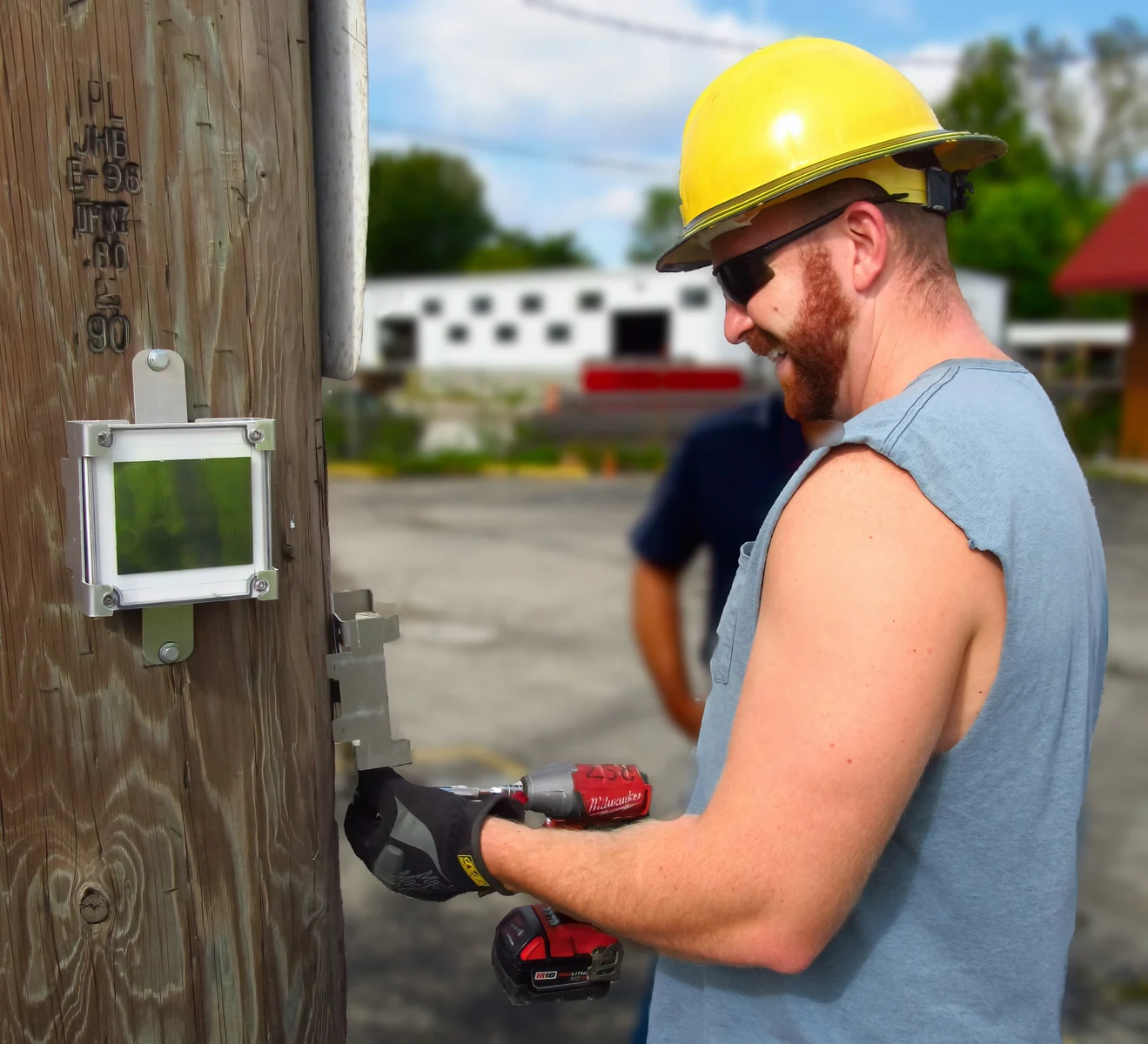What makes SMRTGrid the perfect monitoring solution for your industrial sector? Why should you invest? Here are some answers to questions you might have below.
FAQs
Our initial and primary market focus is bring intelligence and advanced- and highly granular IIoT (Industrial Internet of Things) monitoring of utility distribution grids.
Our utility industry contacts, including our pilot project companies, have targeted a 10% to 15% savings on their operations and management budget Our most current data estimates that a medium-sized municipal utility might expect to save $10 million to $15 million dollars a year on their O&M spending, making their ROI an easy calculation.

Every SMRTGrid power line sensor is mounted directly below the Minimum Approachable Distance, or MAD Zone, on every other distribution pole on problem sections of your grid. Every sensor will take one utility worker, one utility bucket lift, two lag bolts, and five minutes to install after the bucket truck is set and operating.
Our pilot programs have shown that the average crew can install between 30 and 40 sensors in a single day of routine grid maintenance. Utilities typically integrate SMRTGrid Line Beacon installation into their grid maintenance or upgrade schedules.
A faulted circuit indicator (FCI), or fault indicator, gives broad indications of where a fault in your grid occurs. Our Line Beacons give you the exact, pinpoint GPS location, a Google Earth view of that location, the time, and probable cause of every outage on your grid. Unlike FCIs, our Line Beacons also continue operating when the power's off, and for up to 96 hours if the pole they are on goes down. In contrast, FCIs will only communicate with your command center if power is running through your lines. When a blackout occurs, fault indicators will be unable to function—leaving your crews in the dark. SMRTGrid sensors will continue to communicate their pole's exact location and condition while the power is off.
SMRTGrid’s grid monitoring system is calibrated and algorithm-driven. So, over time, as it "intelligently learns" your grid, it can start doing predictive legwork for you and your team. Once we establish performance parameters, we can accurately predict potential power outages based on your area’s historical and environmental data.
So, the longer our sensors are installed on your grid, the more accurate our power-outage- and maintenance requirement predictions become.
Your System Average Interruption Duration Index (SAIDI) and System Average Interruption Frequency Index (SAIFI) are crucial factors for gauging operations and capital-requirement expenses. And they can figure into Public Utility Commission rate increase requests. SMRTGrid combines instant fault detection, live-location reporting, and maintenance warnings to help you improve both metrics dramatically.
SMRTGrid has an ongoing development and deployment partnership with Verizon and we are in discussions for distribution partnerships as well.
The US maintains a slowly growing system of 159 million+ utility poles. Many of these poles are rural, and they need constant maintenance from crews that are often understaffed. This presents SMRTGrid with a sizable potential market and a great business investment opportunity. Independent financial experts who work in Silicon Valley on startups and M&A have placed a realistic SMRTGrid revenue to reach $350 million in three years, and topping $1 billion annually in five years (US only). Those estimates are based on factored analysis -- early adopters only, a target percentage of any utility's grid covered.
Strategically placed SMRTGrid wildfire sensor arrays (in development and testing) use a multi-step verification process to confirm the presence of wildfire near a power grid. After a positive confirmation, SMRTGrid’s wildfire IIoT platform automatically communicates data back to your local communication hubs and incident command centers. Finally, SMRTGrid wildfire sensors will predict potential spread direction and velocity using highly localized environmental and weather data.
SMRTgrid's line beacon has been fully certified to operate in the public domain.
- Issued
FCC Grant of Equipment Authorization.
- Certified by Verizon Labs GSMA.
- Holds an IP 67 durability certification. IP 67 stands for ingress protection rated at a level 6 amount of dust and a 7 amount of water. Level 6 dust is the highest possible rating that a communications device can have, and level 7 water protection is the second-highest level of water protection. So, your SMRTGrid device will be unaffected by the worst dust storms and will last for at least 30 minutes of submersion in 1 meter of water—more exposure than any sensor is likely to see during its lifetime.
- Tamper Proof enclosure.
- Data Encryption.
